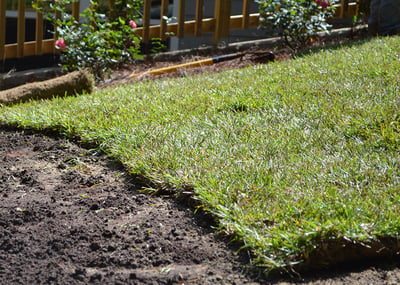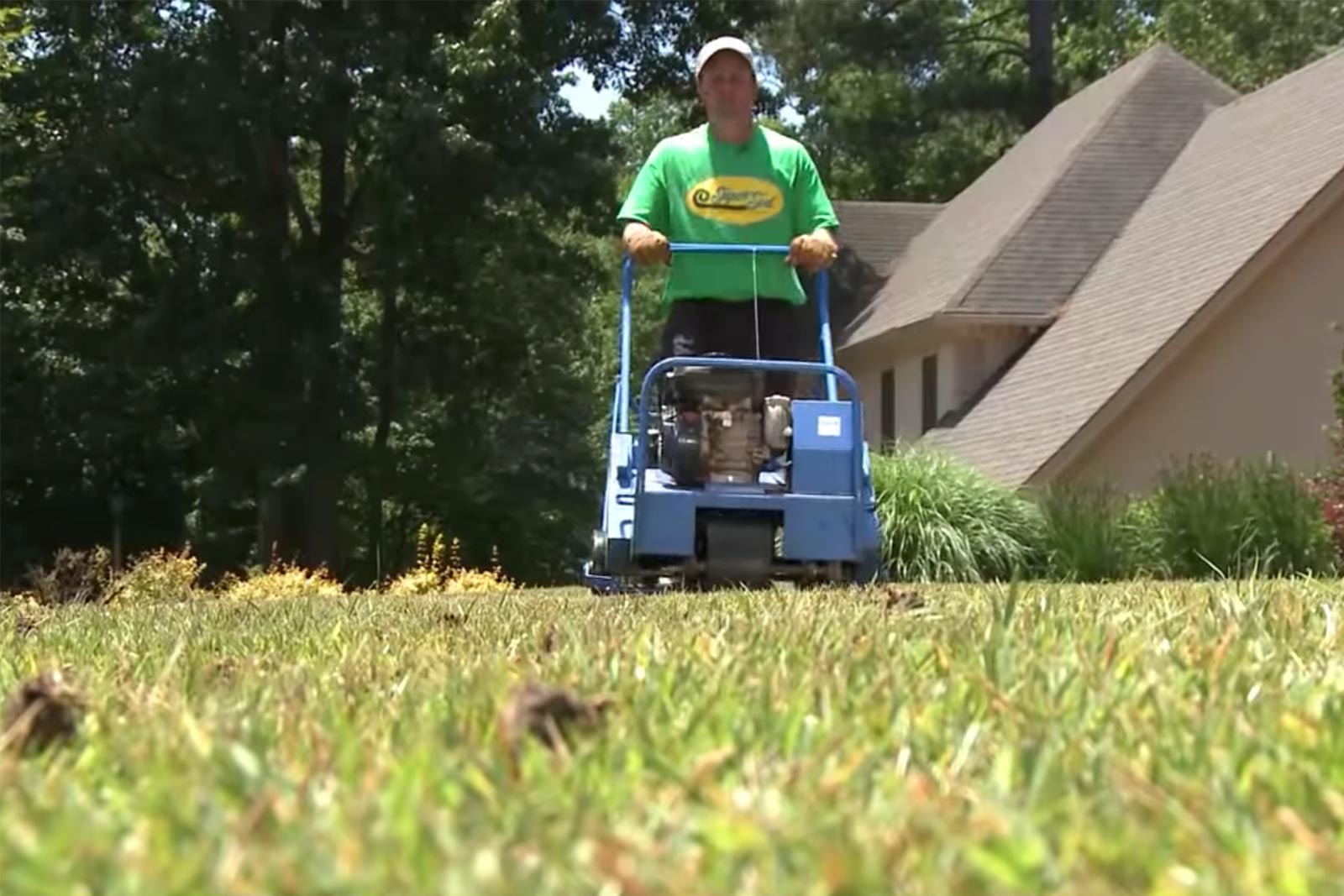

Aerating with a core aerator is an important yearly routine for the optimal looks and performance of your lawn. Aerating takes cores or plugs out of the soil thus creating multiple, small air pockets - that's why it's called "aerating."
The air pockets allow for movement of air, water, and nutrients into the root zone. It's an essential technique in relieving compacted soils and keeping soils healthy, aerobic, and alive. Don't forget that healthy soil is the foundation of a healthy lawn.
We also recommend topdressing lawns with Soil³ humus compost to replace one fertilizer application a year. When you aerate is the ideal time to compost-topress because the holes you create allow the compost to get into the root zone.
Wait, why bother spreading compost? It's organic lawn care!
Our Soil³ compost is OMRI Listed for certified organic gardening. It contains nutrients so you won't need the spring application of fertilizer on your lawn.
Plus, Soil³ contains beneficial microorganisms to keep your soil thriving. An added benefit of those microorganisms in compost is that they suppress fungal diseases on lawns. Read more about organic lawn care with Soil³.
The video above explains why you need to aerate your lawn and demonstrates how to do it. It wraps up with why you should then spread Soil³ humus compost over your lawn and explains two ways to handle the spreading.
Aerating is Not Complicated
Even more rewarding than the ease of aerating is the satisfaction of seeing a boost in your lawn in a few weeks. Here are the brief steps in aerating:
- Push the aerator back and forth across your lawn, making several passes. Go north and south the first time, then crisscross it in and east to west pattern.
- After aerating, spread compost 1/4" to 1/2" thick using a shovel or a compost spreader.
- If using a shovel, then you'll need to rake the compost into the root zone.
- If using a compost spreader, you won't need to do any raking.
- The final step is watering your lawn to finish pulling the compost into the root zone.
Keep in Mind:
- You will probably need to rent an aerator from your local "rental station." Be sure to ask for a "core aerator" or "hollow tine aerator" because some aerators only puncture the soil and that's not good enough. They need to take out cores/plugs.
- Plan ahead and order organic compost delivery ahead of time - our Soil³ humus compost has proven results in homes and sports fields. Read more about: Topdressing Sod with Soil³
- For most lawns, it will probably only take half a day for the whole project.
- The project can be split into two days with aerating one day and compost spreading the next.
- It's great exercise and teenagers are good at spreading compost.
- Some of our stores have the compost spreaders shown in the video for sale and for rent.
- Seasonal timing is very important.
- Aerate warm season lawns such as Bermuda, Centipede, and Zoysia when they are green and actively growing in late spring or summer. August is the last month to safely aerate before the frosts of autumn.
- Aerate cool season lawns such as Tall Fescue in the cool months of autumn or winter.
- Do not aerate newly laid sod; wait until your lawn has an established root system and all the seams are filled in.





